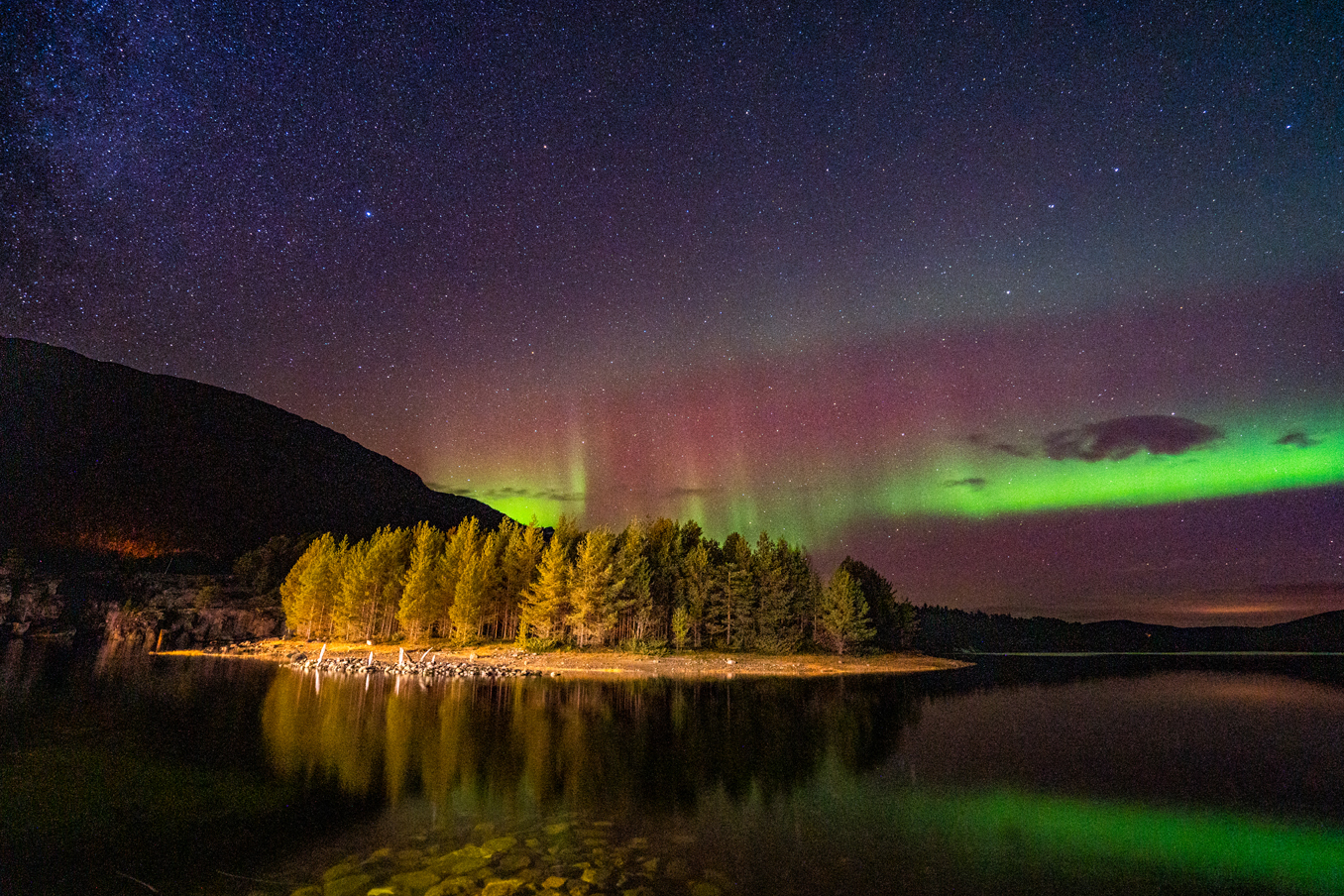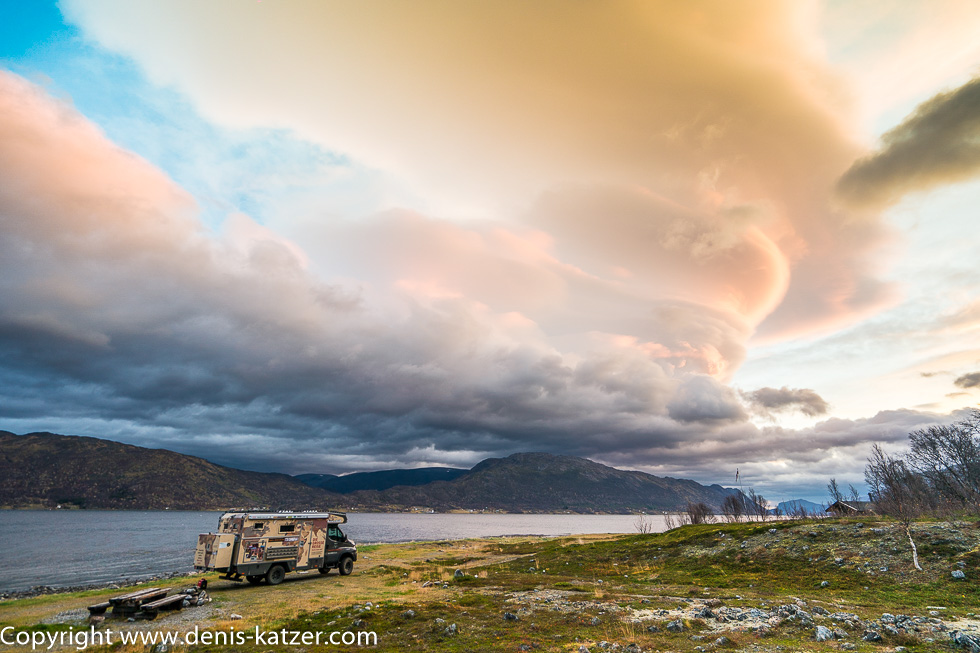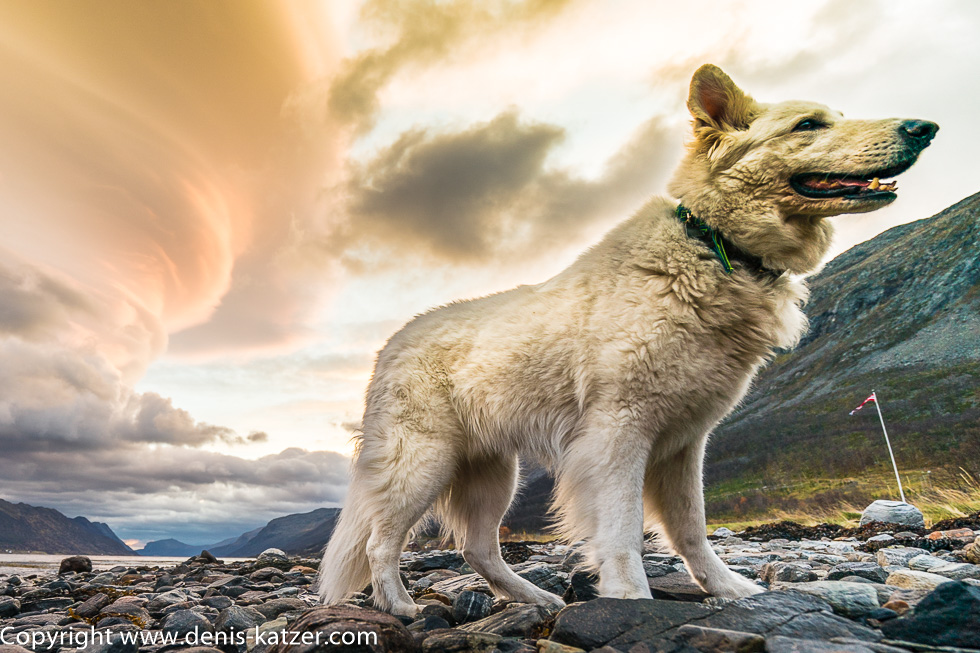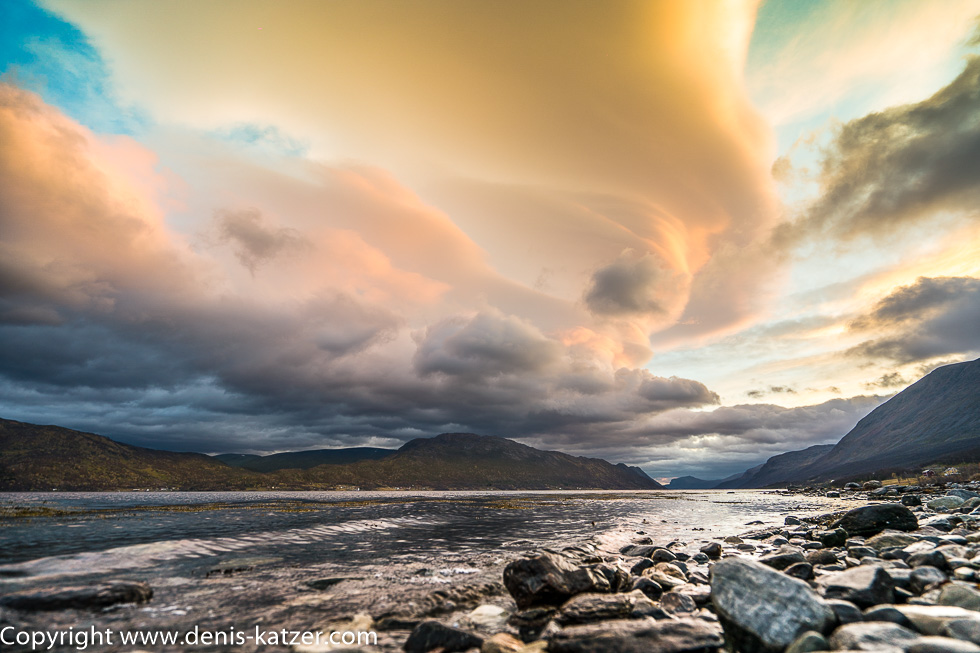
Polar low
N 70°40'05.5'' E 025°23'19.0''
Date:
08.10.2020
Day: 067
Country:
Norway
Location:
At the Porsangerfjord
Daily kilometers:
212 km
Total kilometers:
6465 km
Soil condition:
Asphalt
Bridge crossings:
8
Tunnel passages:
10
Sunrise:
06:56
Sunset:
17:16
Temperature day max:
10°
Night temperature min:
5°
Time of departure:
1:20 pm
Arrival time:
5:00 pm
(Photos of the diary entry can be found at the end of the text).
Click here for the podcasts!
Link to the current itinerary
(For more posts click on one of the flags in the map)
“Look at the crazy cloud formation?” “Unbelievable, I’ve never seen anything like it. It’s like we’re on an alien planet,” says Tanja. “Yes, or they are the harbingers of a polar low.” “Polar lows?” “That’s what they call hurricanes in the far north. They’re not as dangerous as hurricanes, but they have caused shipwrecks and deaths in the past. Above all, it can suddenly snow heavily. Which would mean that the roads might be closed because the snow clearing services can no longer keep up or because avalanches occur. “I didn’t think there would be such weather phenomena here. Do you know how such a polar low develops?” Tanja is interested. “Something like that.” “Well, please let me share your knowledge.” “Okay, I’ll give it a try. Polar lows form where cold air from the polar regions meets a comparatively warm sea.” “But the sea isn’t warm here, is it?” “However you look at it, the Barents Sea and the Norwegian Sea are warmed by branches of the Gulf Stream. It is also responsible for the fact that the average temperature on the Vesterålen and Lofoten archipelagos in the coldest month of February is minus 2°C, while the thermometer inland can drop to arctic temperatures of minus 40°C. The coldest place in Norway, the municipality of Karasjok, has even measured minus 51.4°C. However, for a polar low to develop, the temperature difference between the water surface and the air at an altitude of 6 kilometers must be at least 40 degrees.” “I can’t imagine there being such a temperature difference in October,” Tanja ponders. “It would certainly be unusual, but I know that the temperature drops by around 6.5 degrees for every 1,000 meters of altitude. At the current ground temperature of 5 °C at 6,000 meters, that would be minus 34 °C. If we now calculate an average water temperature of plus 6 °C, we would have the perfect conditions for a polar low. What’s more, the weather is going crazy worldwide and look at the clouds. They look great, but they look threatening to me.” “That’s right, they look really dangerous. So let’s get out of here.” “Yes, let’s pack up and get going.”






